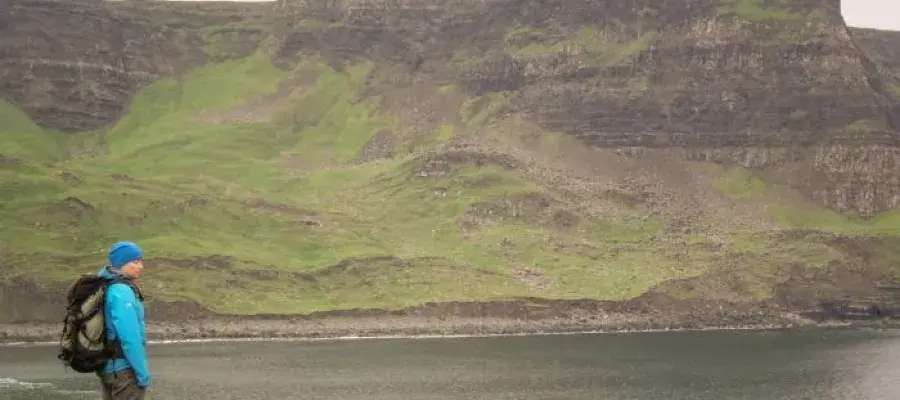
Assessing the UK’s Volcanic Potential for CO₂ Sequestration
The University of Edinburgh’s latest research highlights an often‑overlooked resource beneath the British Isles: ancient volcanic formations. These layers of basalt and other mafic rocks contain abundant calcium and magnesium, metals that can lock carbon in solid mineral form. By converting CO₂ into stone, the process, known as carbon mineralisation, offers a permanent, low‑risk way to keep greenhouse gases out of the atmosphere for centuries.
While public attention has traditionally focused on carbon capture from power plants and industrial sites, the natural geology of the UK provides a complementary storage option. The study identifies eight key basalt groups—from Antrim in Northern Ireland to the Isle of Skye in Scotland and the Lake District in England—that together can store more than 3,000 million tonnes of CO₂. This figure is equivalent to roughly 45 years of the country’s industrial emissions, demonstrating the scale of the opportunity.
Interested in shaping the future of climate resilience? Explore the University of Edinburgh’s GeoSciences programmes and learn how you can contribute to this critical field.
Carbon Mineralisation Explained
Carbon mineralisation is a natural process that has been occurring for millions of years. When CO₂ is absorbed by water—forming a weak carbonic acid—it can penetrate the pore spaces and fractures of volcanic rocks. The reactive minerals in the rock, mainly calcite and dolomite, combine with the dissolved CO₂ to produce solid carbonate minerals such as calcite, magnesite or siderite.
The transformation is safe because the final products are stable, non‑reactive, and will remain locked underground for geological timescales. Unlike physical storage methods that require continuous monitoring, mineralised carbon is essentially self‑sealing; once converted to stone, it cannot re‑emerge into the atmosphere.
Key Volcanic Formations and Their Storage Capacities
The research team calculated potential storage by analysing each formation’s thickness, surface area, and mineral composition. The top performers include:
- Antrim Lava Group, Northern Ireland – Estimated at 1,400 million tonnes of CO₂. Its extensive horizontal layers and high density of reactive minerals make it one of the richest sites in the UK.
- Borrowdale Volcanic Group, England – Could accommodate around 700 million tonnes. The group’s well‑preserved fracture networks enhance the injection process.
- Skye Lava Group, Scotland – Offers roughly 600 million tonnes, with the advantage of isolation that reduces the risk of groundwater contamination.
These estimates are conservative; further detailed porosity assessments could reveal additional capacity across the four principal provinces identified by the study.
Pilot Projects and Proven Success
Experimental pilots already demonstrate the feasibility of the process. In Iceland, a small‑scale carbon mineralisation campaign achieved rapid and complete conversion of injected CO₂ into carbonate, with monitoring showing negligible leakage. The United States has followed suit, conducting a larger pilot that highlighted the scalability of the approach.
In the UK context, university‑driven projects are now planned to test injection protocols, monitor mineralisation kinetics, and evaluate long‑term stability under the local geologic framework. Collaboration with the National Environment Research Council (NERC) ensures that all work aligns with national policy on climate mitigation and complies with rigorous safety standards.
For organisations seeking to reduce their carbon footprint, integrating volcanic CO₂ storage can complement existing capture technologies. Schedule a free consultation with our climate solutions team to assess how mineralisation can fit into your emissions reduction strategy.
Integrating Volcanic CO₂ Storage into National Decarbonisation Strategies
Meeting the UK’s 2040 carbon neutrality goal will require a portfolio of complementary solutions. Carbon mineralisation aligns with several objectives:
- Permanent storage – Avoids the uncertainties associated with long‑term geological sequestration by offering chemical binding.
- Localised capacity – Geologic formations are distributed across the country, reducing the need for long‑distance pipelines.
- Synergy with existing projects – Sites can be paired with industrial CO₂ sources such as cement plants, power stations, or even offshore gas facilities.
By incorporating volcanic storage into the national decarbonisation roadmap, policymakers can diversify risk, create green jobs, and foster innovation in geothermal and geoscience sectors.
Future Research Directions and Practical Implementation
While the current estimates are promising, several research avenues must be pursued to transition from theory to commercial deployment:
- Detailed porosity mapping using seismic imaging and borehole logging.
- High‑temperature and high‑pressure laboratory experiments to refine reaction kinetics.
- Field trials that couple injection technology with real‑time monitoring of mineralisation progress.
- Assessment of life‑cycle emissions to ensure that the overall carbon footprint of the process remains net negative.
Implementing large‑scale projects will also demand careful regulatory oversight, community engagement, and secure financing. The University of Edinburgh is actively collaborating with industry partners, government agencies, and local stakeholders to pave the way for such ventures.
If you’re interested in pursuing a career that sits at the intersection of geology, climate science, and engineering, the MSc in Environmental Geosciences is an ideal pathway. Submit your application today and join a community dedicated to producing real‑world climate solutions.
Engage and Share
We invite researchers, industry professionals, and policy makers to share their insights. Submit your thoughts in the comments below or contact the research team directly to discuss collaboration opportunities. Together, we can turn the geological potential beneath our feet into a cornerstone of a carbon‑neutral future.

